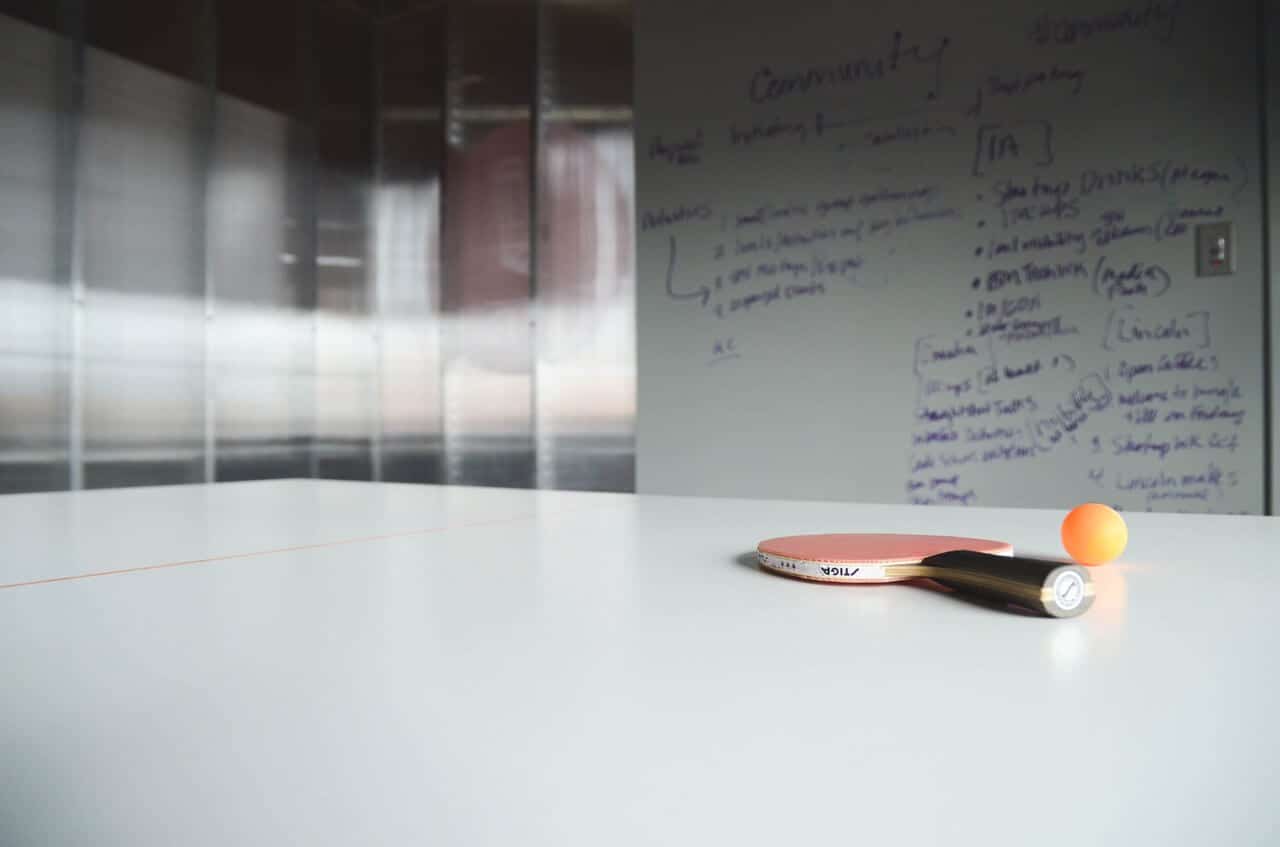
If you’ve ever dreamt of an office reminiscent of tech giants like Google and Facebook, chances are you’ve thought of colorful walls, sleeping pods and the hallmark of innovation: enter the foosball table dilemma.
Just because your company doesn’t align with a layout that includes cubicles, it doesn’t necessarily mean foosball tables and other gimmick-like designs are the answer to lead to a truly rewarding company culture.
It’s much more important to focus on designing your office to mirror your team’s values and working styles, to drive innovation, productivity and employee happiness.
Value good design over gimmicks

Trendy items like beanbag chairs and gaming consoles may give the office a casual and laid-back feel, but their value is easily lost if they don’t match your workplace atmosphere and company culture.
In fact, being quick to jump on the “cool office items” bandwagon may alienate team members who feel that other components of your office, like quiet areas or versatile furniture, should be prioritized.
If you don’t understand exactly how a new piece of furniture specifically benefits your team, you risk incurring a wasteful and under-appreciated expense. To avoid pitfalls like this, start by adhering to some basic design principles, such as incorporating sustainable, useful furniture into your space.
Support all senses

If you’ve ever had a movie ruined by noisy audience members, you know that good experiences can be ruined when your senses are upset. Your office is no different (and if you’ve ever worked with a foosball table, you’ll know this applies). Your workers need to be physically comfortable before your team can enjoy any of the office’s other perks.
Providing your team with essentials like comfortable chairs, a quiet environment, temperature control and plenty of natural light lays down the basic layer of comfort on which your other office ideas can be built. Make sure you cover the five senses: sight, smell, hearing, touch and (by providing the proper kitchen amenities) even taste.
Reinvigorate underused spaces

Getting culture right isn’t always about buying new furniture; it might simply be a matter of adapting your space. Does your team tend to have trouble finding meeting places? Does their work tend to be stressful? Would the team benefit from a workout area or a sleeping area?
Unaddressed questions like these can hurt the wellness and productivity of the team. Create or reallocate spaces to have a positive effect on how your team feels at work.
Of course, managing these moves and changes might be tricky if you’ve got a large space and a large team. If that’s the case, you might want to use space management software to make the job easier.
Get personal

No one knows what your team members want better than your employees themselves. If you already have some ideas for changes in the office, run them by your team. There is one caveat: make sure you combine this information with your own personal intuition. After all, as the facility manager, you’re often better able to see the broader picture as well as specific issues in the office that go unnoticed by others.
Need a tool to gather employee feedback? This checklist of 6 free online tools can help with the everyday FM tasks, including communicating with your employees.
Champion team values

Does your office design support the ethos of your company? Look at your organization’s values or mission statement and see how office design can mirror them. There are many ways this can be done and it will depend on your specific culture, but hosting community events and posting your mission statement in visible spaces are small but effective ways to bolster a commitment to your values.
Instead of falling back on cliché design elements and hokey investments, focus on the needs of your team and the values of your organization.
From there you can start making more informed design choices to create the exact culture you’re looking for and a space your employees will relish to be apart of.
Photos: quami77, Startup Stock Photos, Jacob Sciacchitano, Benjamin Child, paikong, ptyphoto



